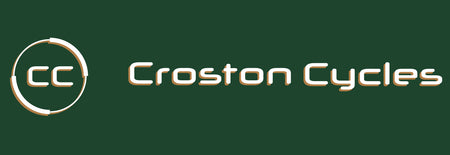
Croston Cycles Bike Fitting Blog - The Angle of Saddle
Welcome to the Croston Cycles Bike Fitting Blog. We offer bike fitting in store and Nick Thomas, our expert and qualified fitter, will be using this blog to share his tips and ensure you maximise your cycling comfort and performance. This week we look at the subject of saddle angle and cycling performance.
Saddle angle is often overlooked when people set the position on their road bike. This is a mistake as a saddle which tilts posteriorly (backwards / nose up) or forwards (anteriorly / nose down) can potentially affect the rider’s weight distribution and is often a contributing cause of discomfort.
A saddle is most commonly positioned so it’s horizontal (flat). This way the cyclist has optimum weight distribution between the saddle and handlebars. People have their saddle tilted for various reasons. Some people are completely unaware of the saddle angle, whereas others have chosen the position with a specific outcome in mind.
The most common compensation people are trying to achieve is to reduce discomfort under the nose of the saddle by anteriorly tilting the saddle (drop nose to it slopes down). The discomfort is usually attributed to one of two reasons:
- Saddle height is too high
- The saddle is minimal and not padded enough
When the saddle is too high some people anteriorly tilt the saddle instead of lowering it thereby reducing the pressure from the nose. The problem with this is the rider isn’t balanced properly and the bodyweight is shifted forward towards the handlebars. This then leads to excessive weight bearing through the arms, shoulders and upper back. The same people often report excessive fatigue and/or pain throughout the upper body – this typically gets worse as the ride progresses.
By establishing the correct saddle height and ensuring the saddle is adequately cushioned there shouldn’t be any need to tilt the saddle forwards on a road bike.
Although it’s less common to see a saddle tilted backwards the consequences still need to be considered. A posteriorly tilted saddle tends to be more by chance than choice. The usual reason when deliberately tilted is the person felt it fitted more comfortably. Assessment usually shows that the cyclist is sitting with a poor, slumped posture so they’re adjusting the saddle angle to accommodate a posteriorly rotated pelvis. The result is excessive stress throughout the back as it supports the rider’s posture due to less weight being placed through the arms. The riding position is much less efficient and the accompanying discomfort will lead to loss in power.
There are some instances when an anteriorly rotated saddle (dropped nose) can often be the correct choice is when fitting a time trial bike. Because the rider is in a more aero position, they roll forwards onto the nose of the saddle to create extra pressure. A slightly lower saddle nose can in many cases provide a more efficient riding position.
Saddle angle should range between horizontal and five degrees of tilt. If your saddle is tilted it’s important to determine why and whether it’s a compensation for bad posture and/or an incorrectly fitted bike.
Nick Thomas is the resident bike fitter at The Endurance Coach, based at Croston Cycles. He is a fully qualified bike fitter and expert in lower limb mechanics, holding a BSc (Hons) in podiatry. A 90 minute bike fitting session costs £75 and you can contact him using the email address: nickthomas@theendurancecoach.com or see more about his fitting services by GOING HERE.
